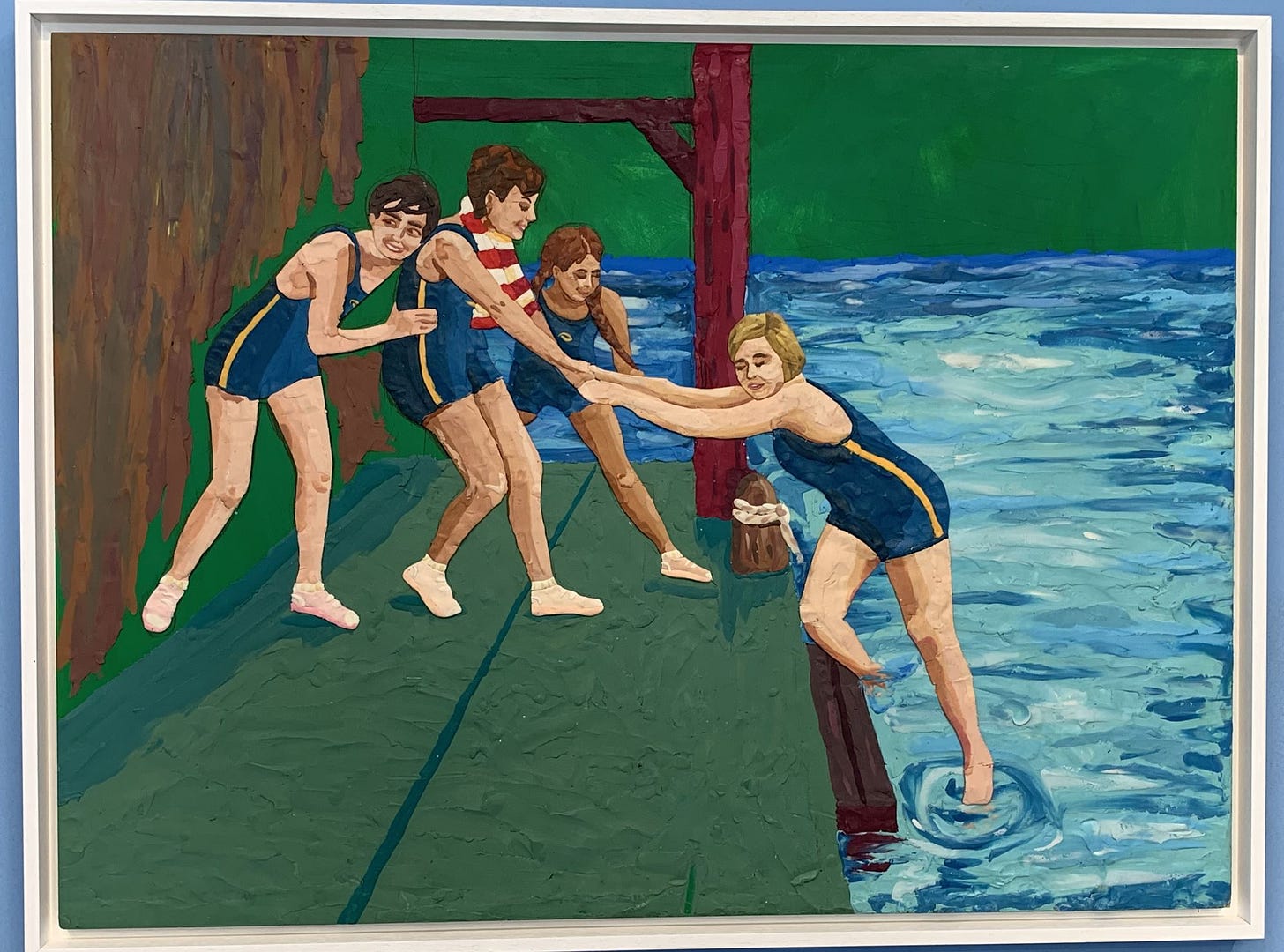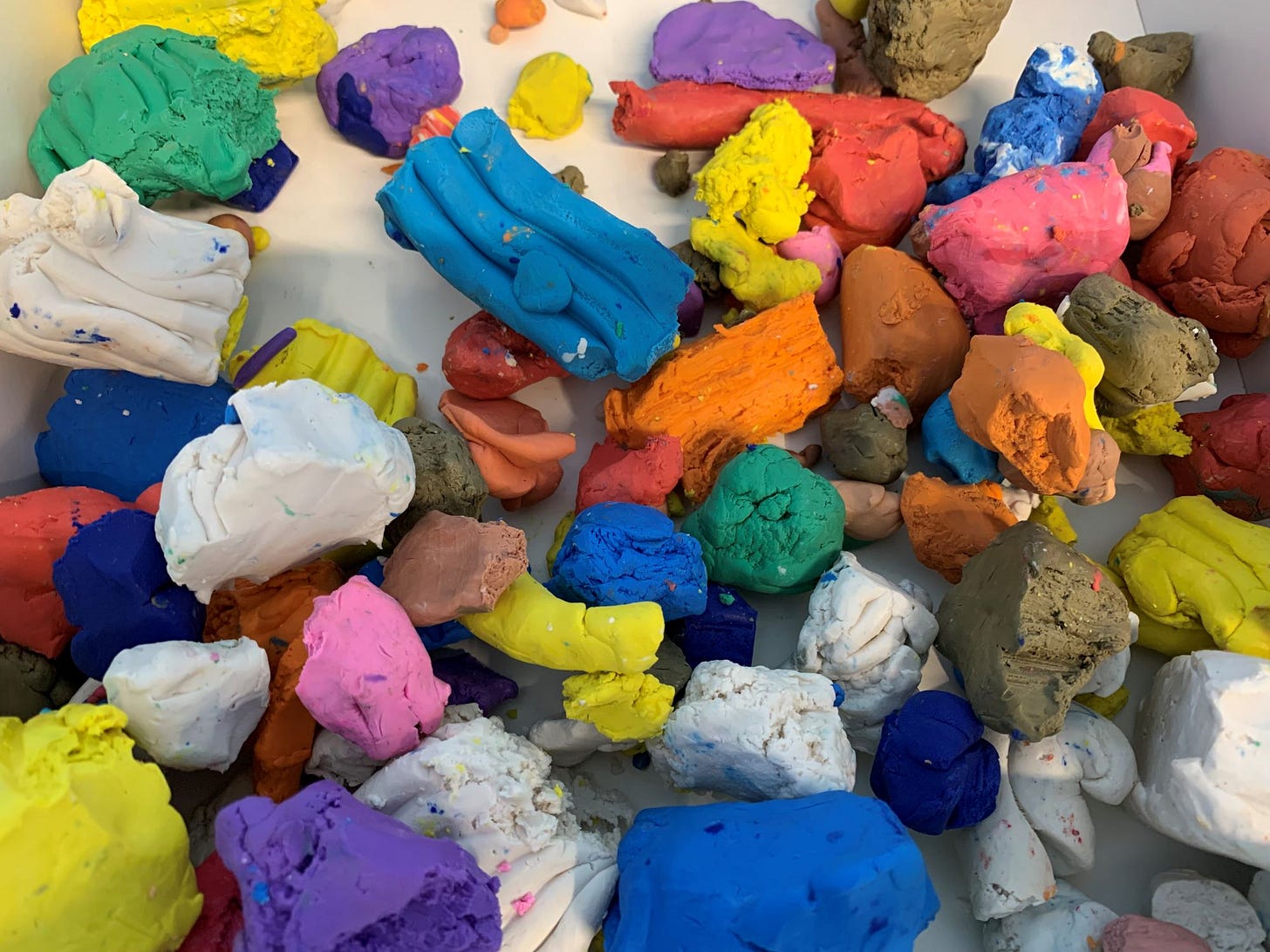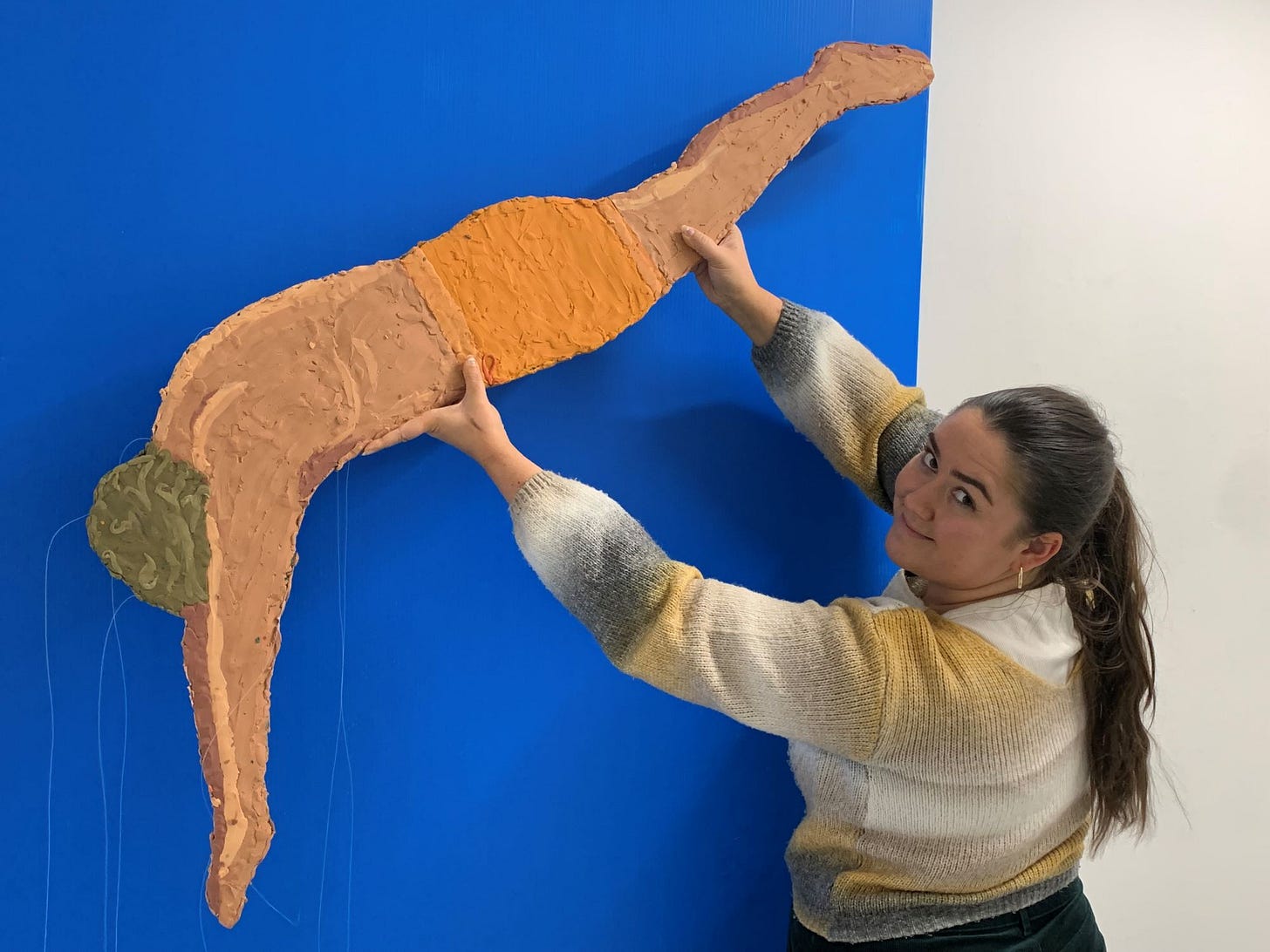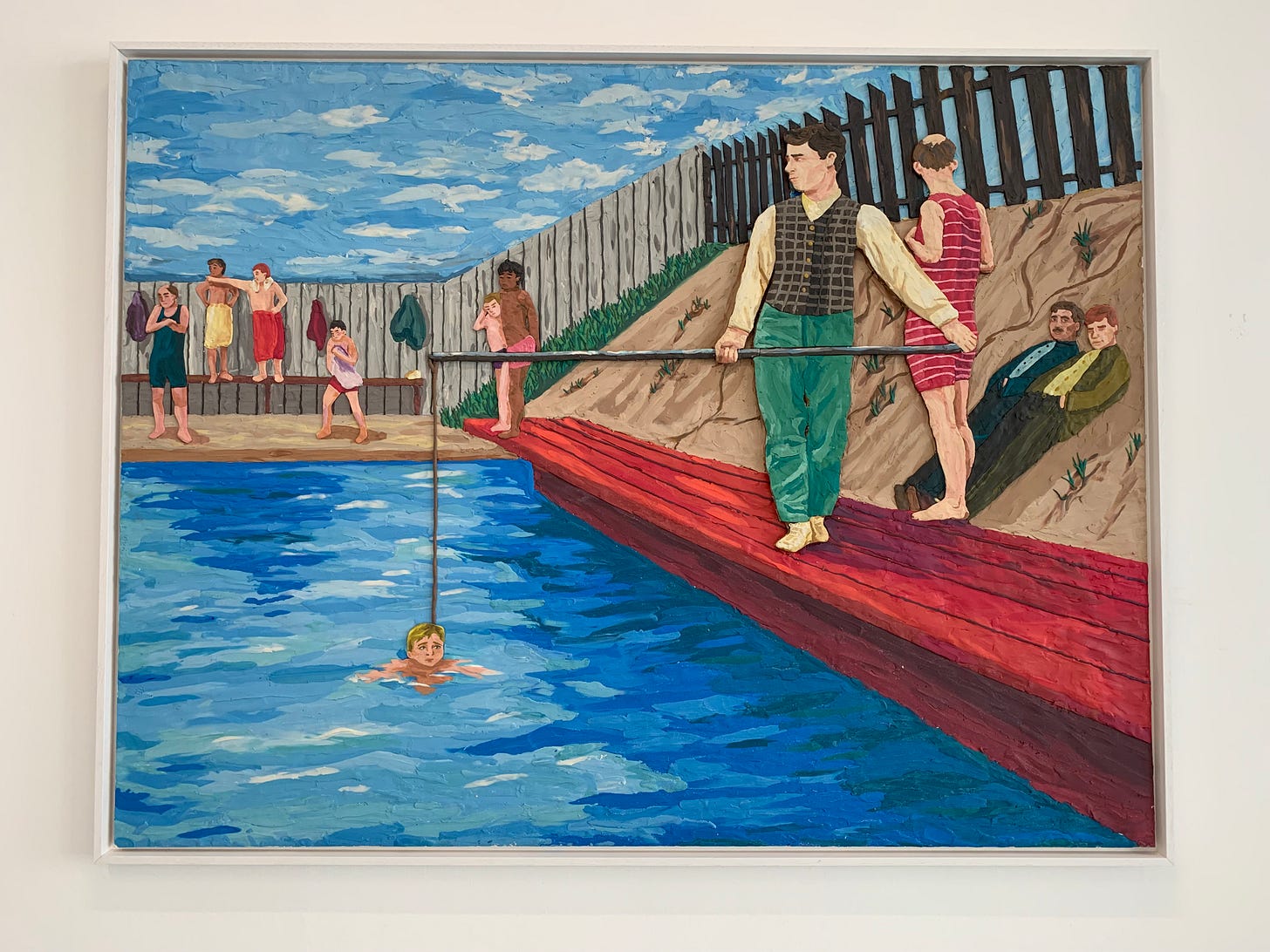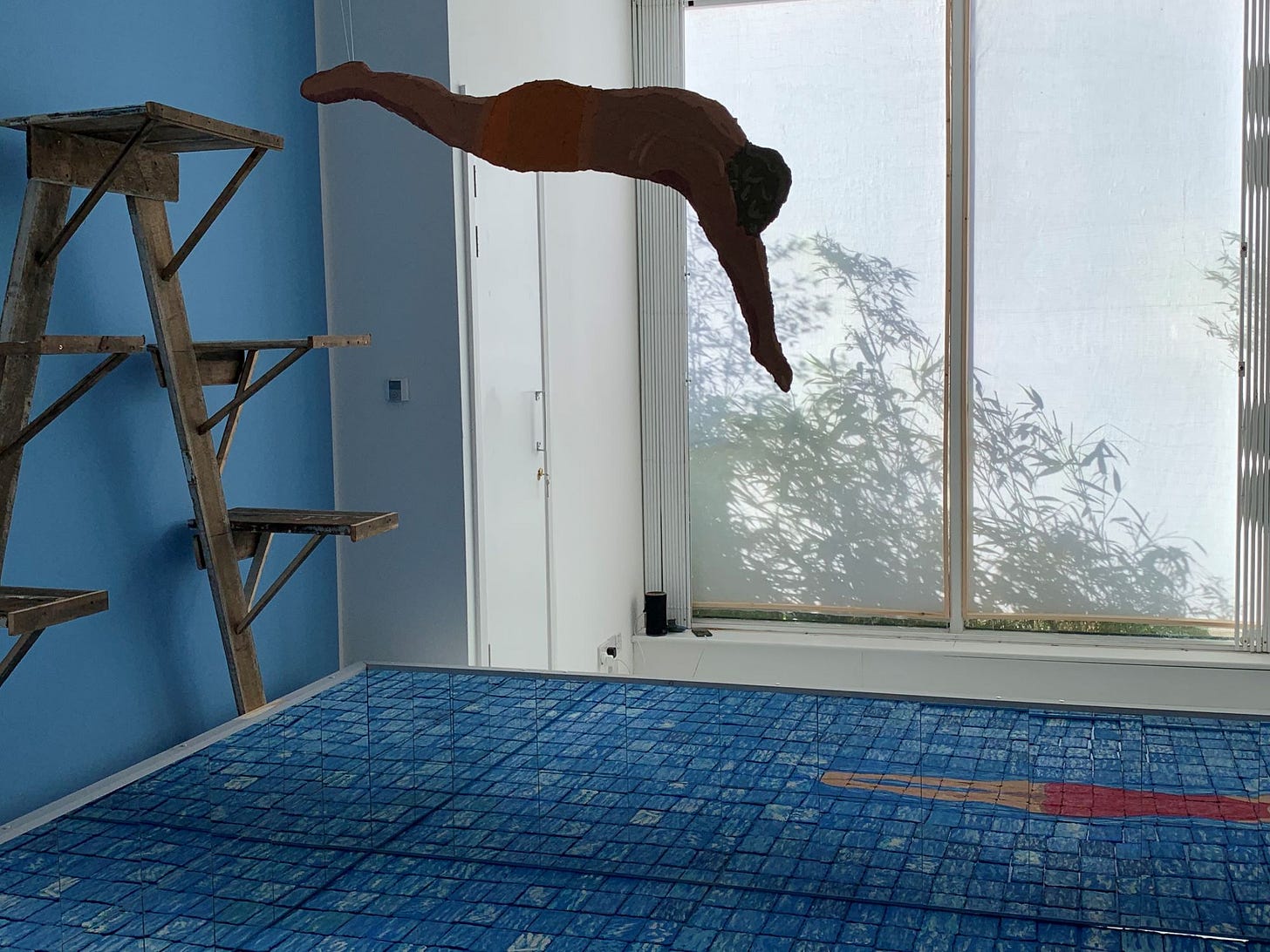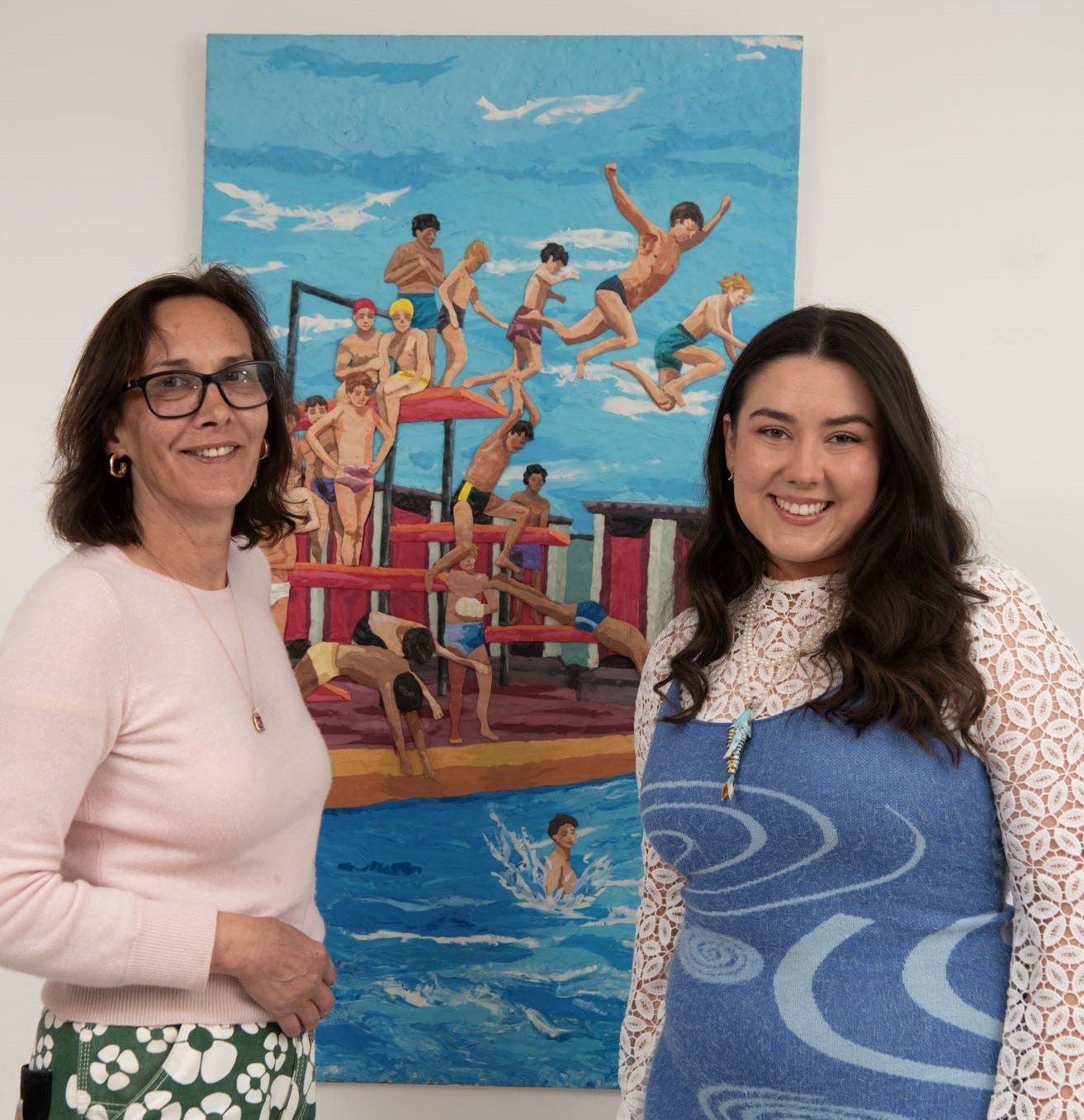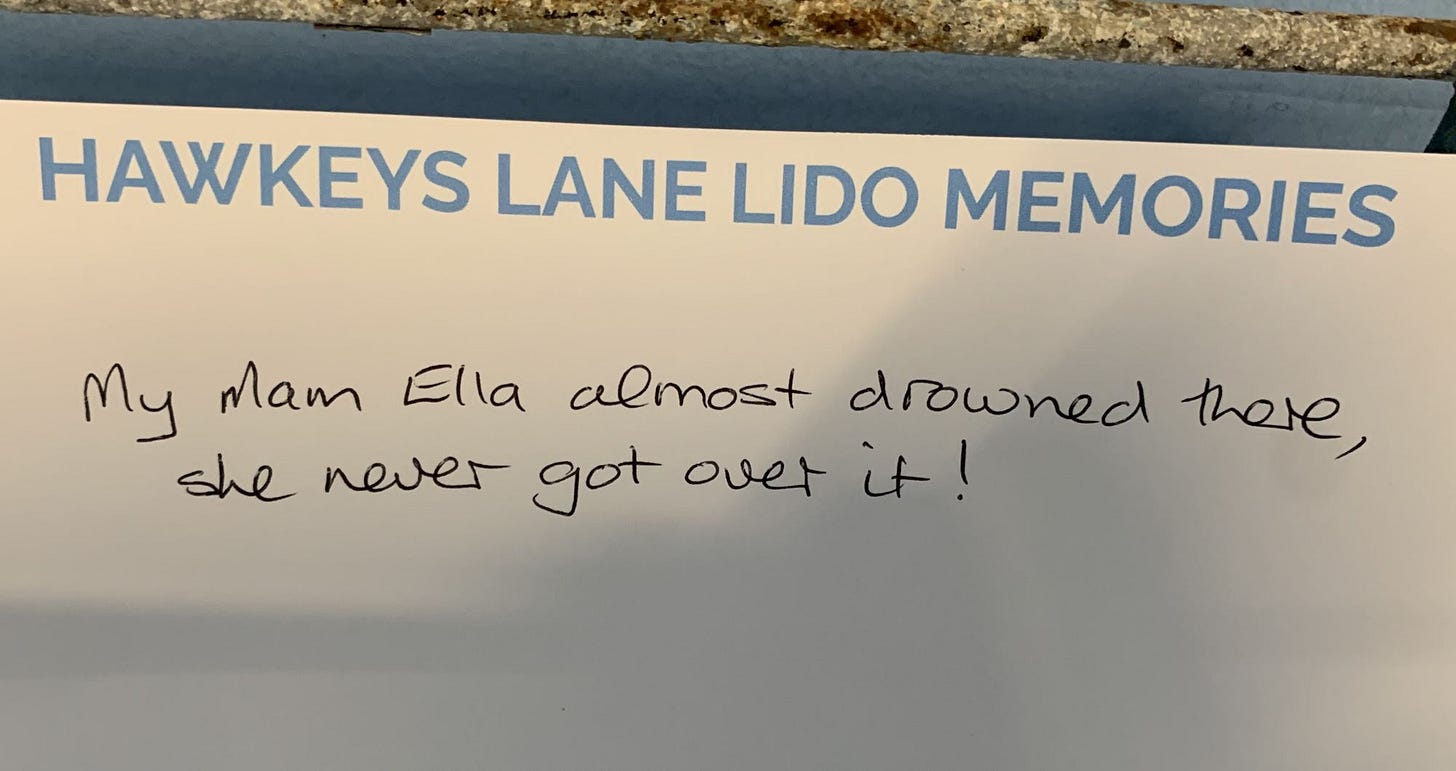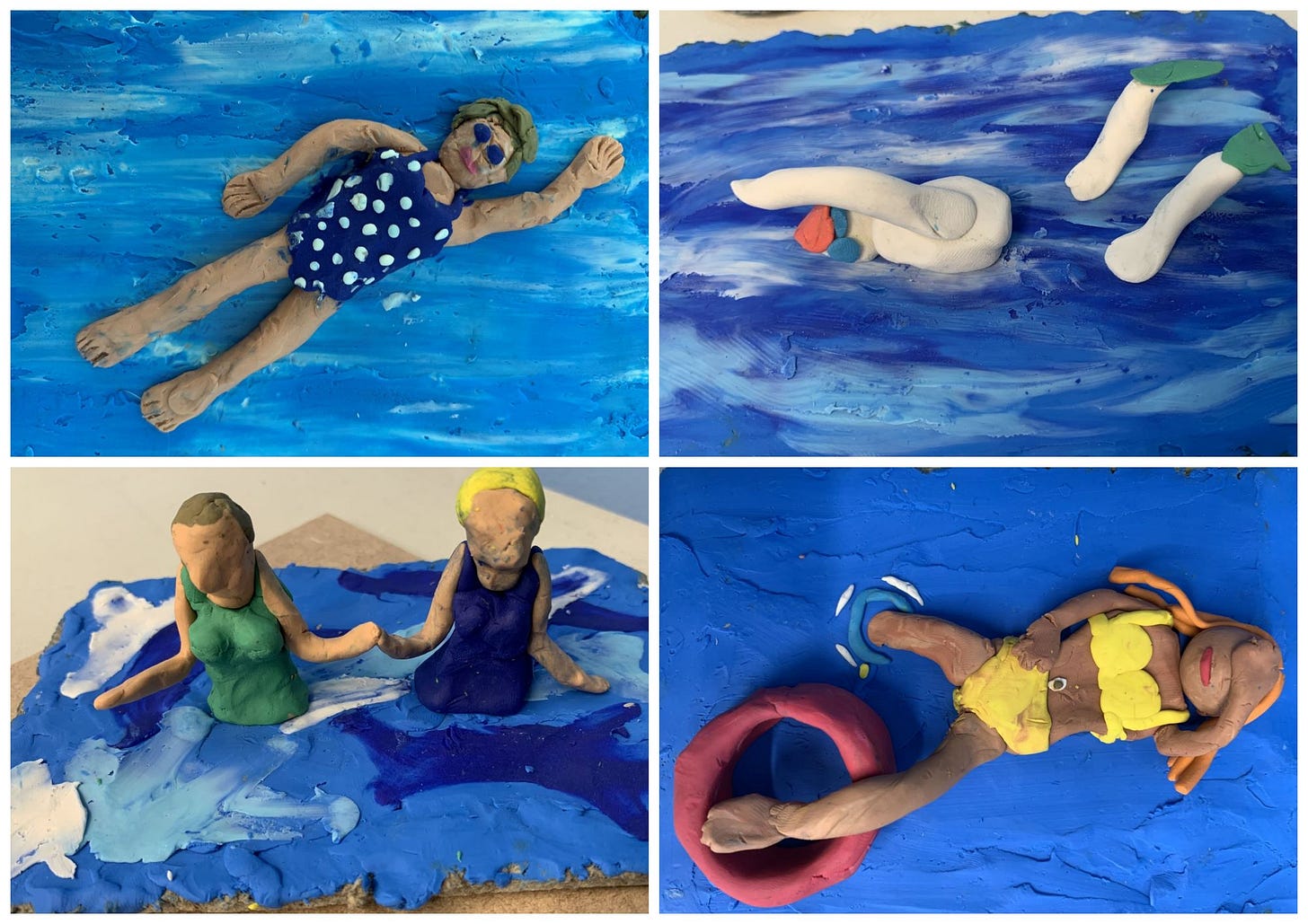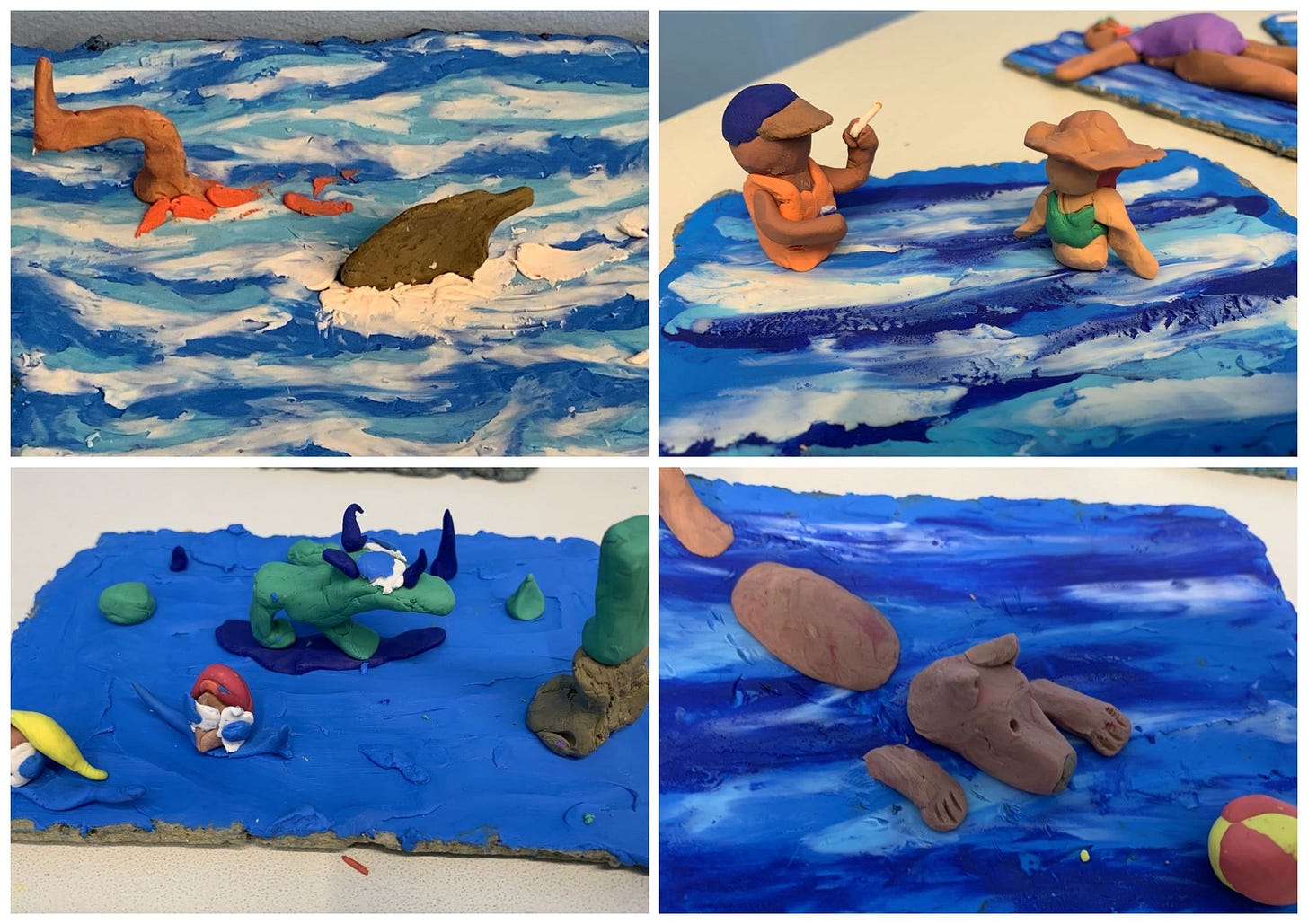The pleasure and pain of Hawkeys Lane - in Plasticine
Inventor William Harbutt remembered
The Globe Gallery’s contribution to the North Shields 800th anniversary celebrations is many things but principally it is a lot of fun. How could it not be when the main components are nostalgia and Plasticine?
It’s a vivid reminder that William Harbutt, who invented the versatile modelling clay (loved by generations of children and tolerated by their exasperated mums for being trodden into goodness knows how many carpets), was born in North Shields in 1844.
I say ‘reminder’ but for many visitors this will be a revelation. I mean, who knew?
It’s true that Mr Harbutt perfected his modelling clay recipe (a closely guarded secret) in later life, after moving to Bath where he became head of the city’s School of Art & Design, but it’s a claim to fame that North Shields should cling to as tenaciously as Plasticine to Axminster.
Plasticine may have been invented for art students but for many of us, here and overseas, it was an essential ingredient of childhood.
Speaking for myself and my siblings, we were never without it.
It was a popular present, often handed out ahead of long car journeys, the corrugated coloured strips to be rolled, pinched and moulded into creations of questionable merit.
Small bits, invariably, would adhere to clothes and floor and eventually the bright colours would meld into unappealing grey/brown nuggets with hairline veins of what went before.
Like odd socks, they would then disappear. What became of all the Plasticine?
Well, at the Globe Gallery you will find plenty of it.
Artist Kitty McKay, aided by enthusiastic community volunteers, has paid Plasticine homage to another distinguishing feature of North Shields – also long gone and, judging by the comments slips, less fondly regarded.
“Hawkeys Lane Baths,” wrote one gallery visitor with a perceptible shudder. “Don’t talk to me about Hawkeys Lane Baths! I still wake up screaming at the thought.”
Before signing off as “A damaged child”, the clearly traumatised visitor recalled visits to this North Shields amenity as “a cold, uninviting, unpleasant and unnecessary part of my childhood”.
Another volunteered the information that “My mam Ella almost drowned there…”
I do wonder about ‘unnecessary’. North Shields being historically a fishing town, the ability to swim, or at least a dunk in cold water, could be seen as a useful early induction for those destined to work in a tough and demanding industry.
On a positive note, as many people must have learned to swim at Hawkeys Lane as developed a lifelong aversion to an icy immersion.
Although judging from Kitty’s research, those who did learn did so the hard way. One old newspaper photo showed a man holding out a pole, from which descends a rope attached to a small boy holding his head resolutely above water.
In another shot, a crowd of shivering kids gathers round one of their number doing frog-like breaststroke motions while perched on a box.
Kitty came upon the idea of Plasticine as an art material when a fine art student at Newcastle University (William Harbutt, you imagine, would have glowingly approved) and used it to depict a historic lido in her final degree show.
This lively Plasticine painting was shown again after she graduated in an exhibition at Newcastle Arts Centre and it was only natural that she and Rashida Davison, who founded and runs the Globe Gallery, should come together.
Rashida first heard about William Harbutt in 1994 and squirrelled the information away as an idea for a future exhibition. North Shields 800, and a recent return for Globe Gallery to its original location on Howard Street, provided the spur.
Inspired by Kitty’s original lido picture, the idea of rekindling memories of the Hawkeys Lane outdoor pool for an exhibition gained traction.
And here it is with, as its startling centrepiece, a sculptural representation of the pool complete with female swimmer and male diver who you can actually imagine are enjoying themselves!
Around the walls are Plasticine paintings by Kitty, including three new ones inspired by the Hawkeys Lane pool which was closed in 1972 having been opened in the early years of the century.
To have swum there, you would have to be in your 50s now – but the memories, as you’ll have seen, are locked in like mammoths in permafrost.
Visiting the Globe Gallery as the finishing touches were being applied, Rashida and Kitty shared their experiences.
Together they went on a research trip to Bath where they met a descendant of William Harbutt and explored his legacy in the archives of a local museum, where there’s even a statue of the man.
Kitty said she was recently contacted via social media by a great great great granddaughter of Harbutt who lives in Newcastle.
Of the whole Plasticine experience, she said: “It’s been so enjoyable, although I have got not exactly a sprain but… (feelingly she massaged her thumb).
“I’ve really delved into Plasticine and techniques of how to use it. Down in Bath we found an old magazine where a woman was saying that to make it soft and creamy you had to put it in hot water.
“So what we’ve been doing is putting plastic sandwich bags full of Plasticine in boiling water.
“When you take the Plasticine out it has a texture almost like oil paint but it dries very quickly so you have to spread it fast, like butter on toast, before it sets.”
This butter-like Plasticine was spread onto 585 tiles made from papier-mâché pressed into and thereby shaped by rectangular takeaway lids.
Kitty, as evidenced by the painful thumb, did much of the spreading but she has been assisted by the volunteers, some of whom took tiles home with them to complete.
And none of it would have been possible, stressed Rashida, without the hundreds of egg boxes supplied by Barry’s Fruit and Veg which were torn up to be mixed with glue and water for the papier-mâché.
The name of this worthy local retailer appears among a very long list of people without whom this multi-faceted exhibition would not have been possible.
The art of painting with Plasticine may not be widespread. One of William Harbutt’s daughters was a talented practitioner (as evidenced on an old Pathé news film) and there have doubtless been others over the years.
But Kitty, while she could be forgiven for wanting to avoid all shades of blue for quite some time, has shown what can be done.
One of the most entertaining aspects of this exhibition comes courtesy of gallery visitors, encouraged not only to share written memories of Hawkeys Lane pool but to create their own Plasticine models.
There are laughs to be had here. An inspired child put a dinosaur on a paddleboard while someone else described a bloody shark attack (surely even Hawkeys Lane wasn’t that bad?). Someone else modelled a bather trying to keep warm with a fag.
Rashida Davison is an instinctive gallery curator, her Globe Gallery invariably catching the pulse of the town with its creativity and (possibly rather gallows) humour. Viz founder Chris Donald’s wryly funny tourist posters are still popular attractions in the adjoining shop.
Kitty McKay, working in a primary school now as well as furthering her career as an artist, has done a wonderful job of putting William Harbutt, Plasticine and the Hawkeys Lane pool back in the public eye. Hopefully she will soon regain full use of her thumb.
The exhibition, By the Lido Wall, was supported by funding from Historic England and runs at The Globe Gallery, Howard Street, North Shields, until mid-December.



